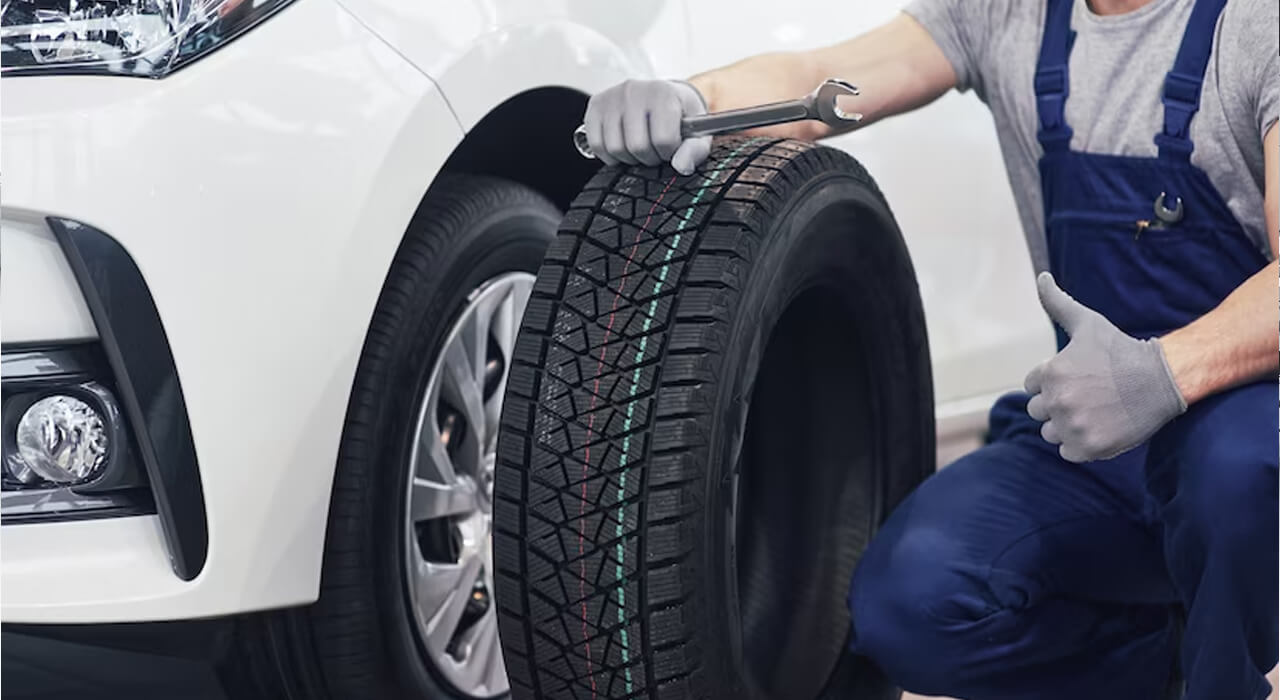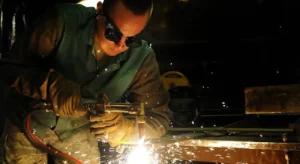All over the world, tire manufacturers produce about a billion air-pumped tires yearly. There is a specification for everyone’s size, safety, durability, and other factors. It entails a complex process in the factory that combines rubber, textile, fibre, and steel cords. These help create and set up the body piles, inner liner, belts, bead assembly tread and sidewalls for the complete tire.
For that reason, these manufacturers need seamless processes for better efficiency. With more efficiency, they ensure high-standard tires while minimizing cost. One of the ways to achieve these objectives is to utilize electric actuators in the manufacturing process. Let us now see what electric actuators are about and how they make tire manufacturing seamless.
What is an electric actuator?
Electric actuators are mechanical devices that enable you to convert electrical energy into movements. It may be a linear or a rotary movement. Actuators work on specific tasks and come in different sizes and dimensions. When applied to a system, they automate the valve or damper to improve the efficiency of the process and reduce complexity.
There are more diverse applications for electric actuators nowadays. This trend is due to the gradual decentralization of automation technology. This means the latest process controllers are compatible with last-generation electric actuators. Therefore, it is easier to maintain and upgrade to the highest automation standards. Even when you lose power, electric actuators save the day with their failsafe features among others. So you are sure to maintain control in any ongoing processes when you use electric actuators.
Suggestion: Top Car Brands That Start With Letter C
The main parts of an electric actuator
The electric actuators operate at different voltages. It is therefore versatile as it is useful in several industries. The common voltage ratings of the single-phase electric actuators are:
- 24 VAC
- 115 VAC
- 208 VAC
- 230 VAC
- 12 VDC
- 24 VDC
There are also voltage ratings like 230 VAC and 460 VAC. However, these are for three-phase electric actuator motors.
Then there’s the actuator brake which you find on the motor’s top. Its function is to restrict force from the media towards the valve, keeping it closed. It does this by locking the rotor of the motor when it is idle.
Another major component of the electric actuator is the motor start capacitor. It boosts the power levels of the motor to start. This is common with AC motors. However, in DC motors, electric actuators don’t need a capacitor.
Lastly, the other critical part of the electric actuator is the two SPDT (single-pole, double-throw) end-of-travel limit switches. One of them works for an open position while the other is a closed position. The switches cover the necessary electrical contacts for many applications such as the open, immediate, and closed positions.
How electric actuators improve the tire manufacturing processes
During the process of tire manufacture, motion control systems play a vital role. They enable the achievement of certain requirements. These include faster assembly, better quality, higher flexibility and reliability in adjusting changeovers and sizes. Although many process controls use hydraulic and pneumatic actuation, electric actuators are taking over. Manufacturers have found them faster, more efficient, and more importantly, cleaner.
Going on, we analyze the step-by-step manufacturing processes involved in tires. We also highlight the challenges faced and the possible solutions.
1. Rubber cutting
This is the process that involves cutting rubber into different tire shapes and sizes. We further analyze a case study that covers electric actuators and how they ease the manufacturing process.
Challenge:
In a tire manufacturing company, the goal was to lessen energy consumption by 20 percent in the process of cutting rubber. Also, they wanted improved reliability. The actuators installed at the X and Z axes were responsible for moving the knives in a sleek, consistent motion and at a steady velocity. Meanwhile, the vertical axis actuators moved the blades in an up-and-down fashion.
Also Check: 11 Best V8 Sedans 2023
This design had a pneumatic actuator operating the processes. It demanded significant air to properly function, and this increased the cost of electric utility. Likewise, maintenance costs increased as the system needed regular replacement of the actuator shock absorber.
Solution:
After considering the setbacks, the manufacturers decided to replace the actuators. They took out the pneumatic actuator and replaced it with electric linear actuators. An example of this heavy-duty belt-driven linear actuator is the MXB-P.
The solutions this actuator provided were higher speeds, longer strikes, and a more efficient performance. The resulting profiled rail system had a heavy-duty drive belt and the ball linear guides moved at about 140 inches a second.
Outcome:
The manufacturer recorded improved consistency in performance levels. Another was recording huge cost savings in the electric utility. Also, there was reduced maintenance downtime and less cost of replacing wearable pneumatic parts on the machines.
2. Tire turn-up
This is the formation process of the tire. It involves turning the tire from a piece of rubber into a pumped tube of air ready for use.
Suggestion: 9 Best 4-Door Sports Cars Under 20k
Challenge:
The rubber material and the other parts of the tire like the tread rubber, sidewall rubber, and beads now form around the steel drum. The manufacturer then uses hydraulic cylinders to turn up the opposite sides of the deflated tire material. This process forms the raw tire or “green.”
But, using hydraulic cylinders is messy. It tends to leak under high pressure from the hydraulic fluid tubes connected. The hydraulic tire turn-up process is noisy as well. It demands steady adjustments to make sure performance is optimal. It also requires continuous periodic maintenance.
Solution:
To solve this problem of maintenance cost and consistency, the manufacturers had to introduce two electric actuators. These would replace the hydraulic cylinders in forming the green tire from the deflated tire material. These powerful RSA actuators could offer up to 60-inch stroke and 9,000 lbf in force. Also, the actuator’s ball screw had a long-lasting lubricant that hence needed no regular maintenance.
Outcome:
The result was a process with better repeatability and less safety implications. It also led to lower maintenance costs and no replacement costs for hydraulic components. Overall, the machine became more efficient in production.
3. Tire inspection
This is the last process in tire manufacturing. It entails running checks to ensure the tire is fit for usage in practical environments.
Challenge:
There are several steps involved in tire inspection. The steps involve:
- Visual checks
- Balance checks
- Analysis of force and movement
- X-ray checks
Generally, the inspection machines utilize cameras, and lasers for visual checks. By also inspecting the tread depth, pressure and trueness of the inner tire seat, it checks for balance, force, and movement. These are the tasks of the actuators, to move and position the lasers and cameras accordingly.
Suggestion: Top 10 Best Japanese Sports Cars List in 2023
Solution:
In the inspection of force and movement, tire inflation is often twice the normal pressure. The press machine for the tire inspection often used hydraulic actuators. The hydraulic cylinders while in operation, made lots of noise and took up space. It also needed regular oil changes that consumed time and created a mess. When were larger tires added to the line of products, the manufacturer had to switch to electric actuator machines.
Outcome:
The high-force actuators introduced were the RSX electric actuator. They provided a 24-inch stroke and a dynamic force of 1,100 lbf capable of closing the system. It also offered 20Tkg of static force able to keep the system stable under pressure. It had a repeatability of 1500 cycles each day. In the end, the manufacturer recorded a drastic cut in downtime and electric utility costs.
Conclusion
The tire manufacturing process is a complex and tedious one. There are many criteria to meet such as the right tire pressure, balance, force and movement, etc. Unlike the pneumatic and hydraulic actuator systems used in tire manufacturing, electric actuators offer unique benefits. These include lower maintenance costs, increased repeatability, and efficiency among others. So for any tire manufacturer looking to optimize operations, electric actuators prove the better option.






